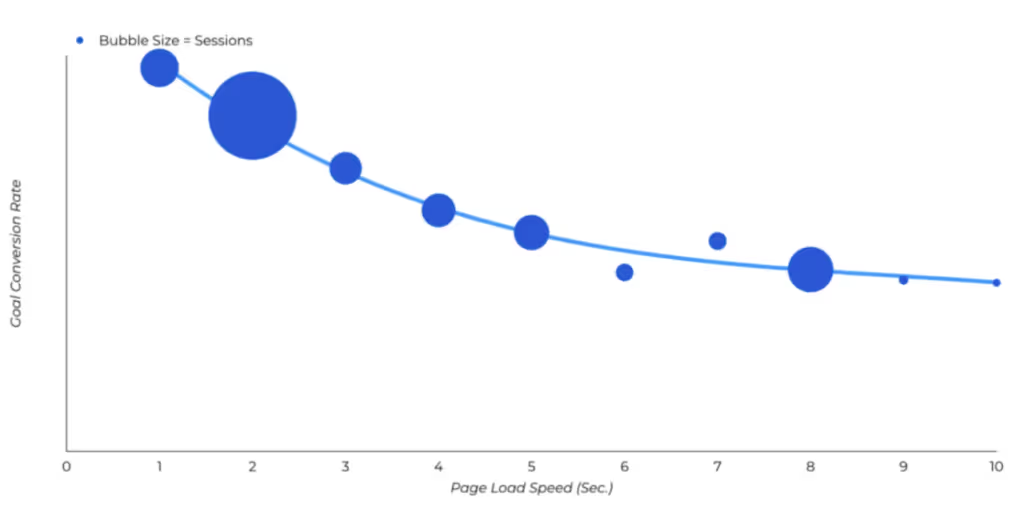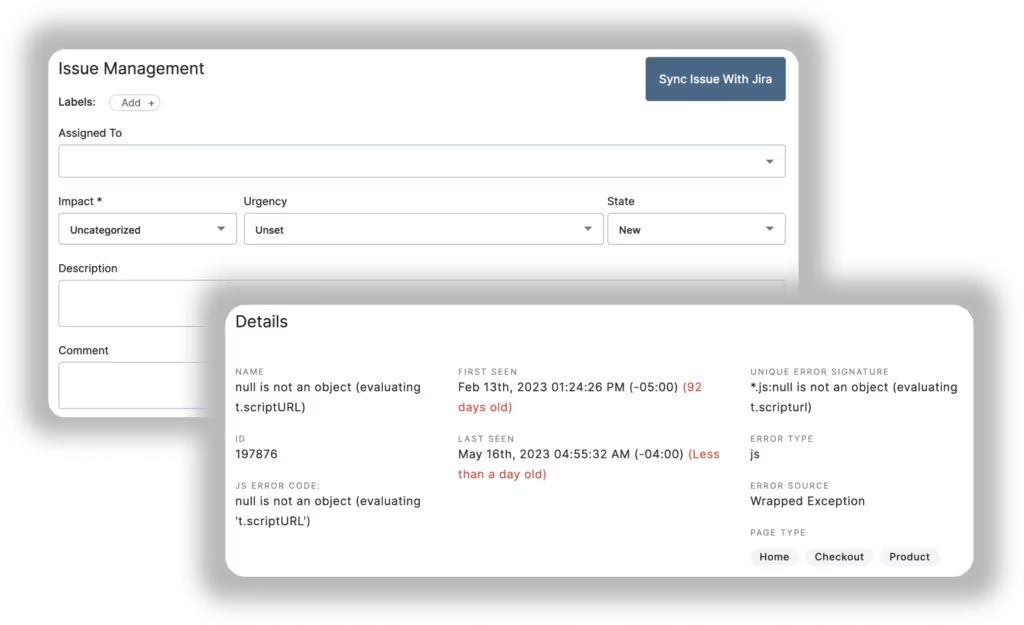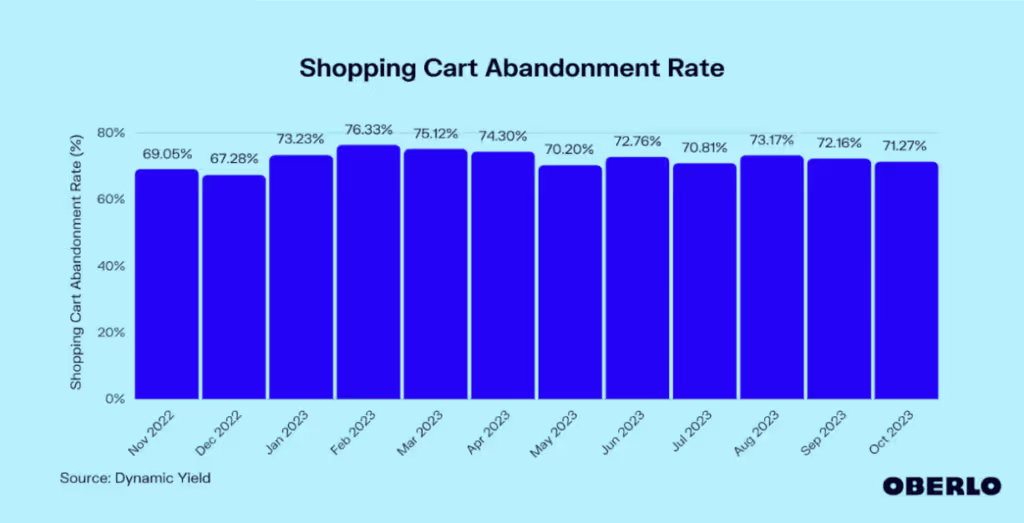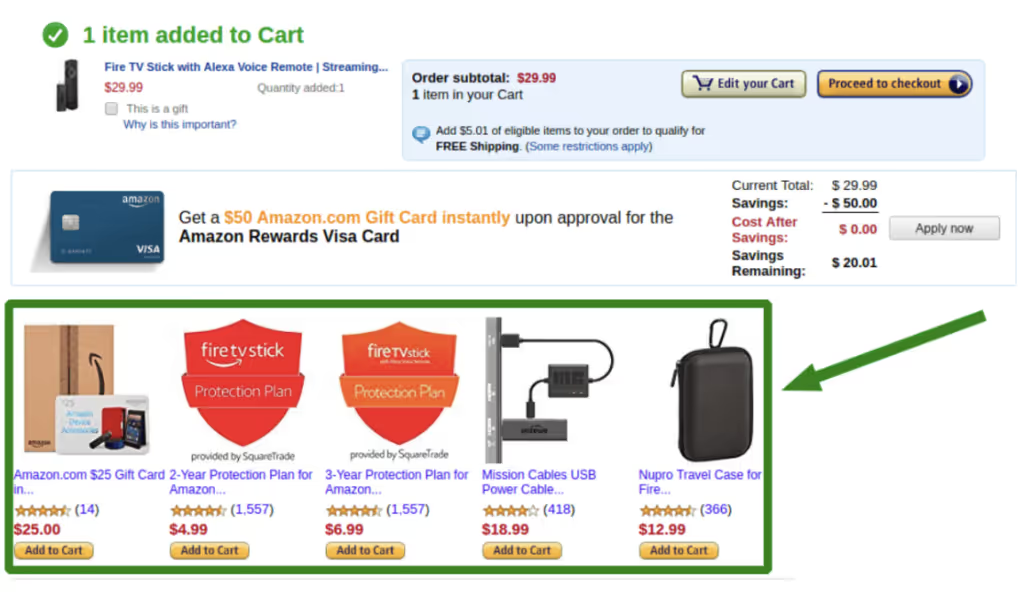The role of a seamless ecommerce checkout flow in optimizing your site for conversions

In ecommerce, the checkout process is a critical moment of truth. Far exceeding the role of a simple transactional endpoint, the checkout experience serves as a pivotal element that profoundly influences both customer satisfaction and overall sales outcomes.
A study revealed that approximately 69.8% of online shopping carts are abandoned, which underscores the immense impact that the checkout experience can have on ecommerce success.

Optimizing the ecommerce checkout flow is not merely an operational concern but a strategic imperative that directly correlates with customer retention, satisfaction, and the overall health of the business's bottom line. As the ecommerce landscape continues to evolve, understanding and enhancing this crucial aspect of the customer journey becomes paramount for businesses aiming to thrive in an increasingly digital marketplace.
Why a smooth ecommerce checkout process is important
This aspect of online shopping is not just a final step in purchasing but a significant component of the customer's interaction with a brand. An intuitive and hassle-free ecommerce checkout flow streamlines the path to purchase, removing any potential obstacles or frustrations. This efficiency does more than just facilitate a transaction; it creates a lasting positive impression on an online shopper.
A positive checkout experience can resonate deeply with customers, influencing their perception of the brand. In an online setting, where personal interactions are limited, the smoothness of the checkout process becomes a key touchpoint for overall customer satisfaction and experience. Beyond simply speeding up a sale, a streamlined checkout process plays a pivotal role in building trust and fostering customer loyalty. A smooth, secure, and transparent checkout process addresses concerns about security and privacy, reinforcing the customer’s confidence in the brand.
This trust, once established, becomes a driving force behind higher conversion rates. Customers who have a positive and secure experience during checkout are more likely to complete their purchase, reducing the likelihood of cart abandonment.
Furthermore, this trust extends beyond a single transaction; it cultivates loyalty. Loyal customers are not only more inclined to make repeat purchases but are also likely to become brand advocates, recommending the online store to others.
Common challenges in ecommerce checkout
Ecommerce checkout flows, though crucial, are often fraught with challenges that can impede a smooth customer experience. These issues, if not addressed, can become significant barriers to completing a purchase, affecting both customer satisfaction and the overall success of the ecommerce platform.
Slow loading times
One of the most common and impactful challenges is slow-loading pages. In the fast-paced digital world, customers expect quick and responsive online experiences. A delay of even a few seconds can be enough to frustrate customers, potentially leading them to abandon their cart.
Therefore, optimizing the loading speed of checkout pages is vital. This can involve:
- Constant website monitoring
- Streamlining the code
- Compressing images
- Employing faster hosting solutions

Complex navigation paths
A checkout flow with too many steps or confusing navigation can easily overwhelm and deter customers. Simplifying the ecommerce checkout flow to a few clear and concise steps can make a substantial difference.
This simplification includes:
- Reducing the number of pages to navigate through
- Clearly labeling steps
- Providing a progress indicator to give customers a sense of how much longer the process will take
Security concerns
With increasing incidences of data breaches and online fraud, customers are more cautious than ever about the security of their personal and financial information. Ensuring robust security measures not only protects the customers but also builds their trust in the brand.
This can be addressed by:
- Implementing secure payment gateways SSL certificates for encryption
- Compliance with data protection regulations like GDPR and PCI DSS
- Clearly displaying security badges and certifications
Additional challenges
Other challenges in ecommerce checkout include inadequate payment options, mandatory account creation, and lack of clear error messages.
- Providing multiple payment options caters to different customer preferences, enhancing convenience.
- Allowing guest checkout options can attract customers who do not wish to create an account.
- Clear and informative error messages can help customers quickly rectify any issues they encounter during the checkout process.
Key elements of a seamless checkout experience
Several key elements contribute to crafting a seamless experience, each addressing different aspects of the customer's needs and concerns during the final stages of their purchasing journey.
Ecommerce checkout page design
A well-designed page should embody simplicity and clarity to minimize distractions and focus the customer’s attention on completing the purchase. This involves a clean layout, intuitive navigation, and clear, concise instructions. The goal is to eliminate any potential confusion or frustration that could lead to cart abandonment.
Guest checkout option
Many customers prefer a quick, registration-free process, especially when purchasing for the first time from a site. A guest checkout option reduces the barriers to completing a purchase, as it removes the need for forced account creation, thereby speeding up the process and reducing friction.
Streamlined form fields
Minimizing and streamlining these fields can significantly reduce the effort and time required from customers. This means asking only for essential information and using predictive input and autofill where appropriate. Streamlining these fields not only makes the process faster but also reduces the cognitive load on the customer, leading to a more pleasant experience.
Mobile-friendly checkout
The mobile checkout experience should be as smooth and intuitive as the desktop experience. This involves responsive design, larger form fields suitable for touchscreens, and simplified navigation tailored for smaller screens. Ensuring the checkout is optimized for mobile devices can dramatically improve the experience for a large segment of customers.
Secure payment options
Implementing advanced security measures like SSL encryption, two-factor authentication, and compliance with PCI DSS standards can reassure customers that their financial data is safe. Clearly displaying security badges and certifications also enhances this trust.
Multiple payment options
Finally, providing a variety of payment options can include traditional credit/debit card payments, digital wallets like PayPal or Apple Pay, and even newer payment methods like cryptocurrency. Offering multiple payment process options ensures that customers can choose their own preferred payment method, thereby enhancing the convenience and accessibility of the ecommerce checkout flow.
The role of ecommerce monitoring solutions for ensuring uninterrupted checkout flow

Ecommerce monitoring solutions play a crucial role in ensuring a flawless and uninterrupted checkout flow. These solutions are engineered to scrutinize ecommerce websites continually, identifying and alerting on any issues that may disrupt the checkout experience. They serve as a vigilant guardian, detecting problems ranging from minor glitches to significant system failures.
Platforms like Noibu specialize in providing real-time insights into ecommerce website performance and functionality. They can pinpoint errors that could lead to checkout disruptions, such as broken links, ecommerce checkout page loading issues, payment gateway failures, or practically any other technical error causing customer frustration.
By promptly identifying these issues, an ecommerce business can quickly address them, minimizing the impact on the customer experience. This proactive approach is essential in maintaining a smooth and reliable checkout process, which is fundamental to retaining customer trust and loyalty.
Addressing cart abandonment
Cart abandonment is a pervasive issue in ecommerce, with substantial financial consequences. Luckily, various strategies can be employed to tackle this challenge.
- Simplifying the ecommerce checkout flow is a primary method, as a complex or time-consuming process is a common reason for abandonment.
- Offering incentives such as discounts, free shipping or low shipping costs, or special deals can also entice customers to complete their purchases.
- Additionally, sending reminder emails to customers who have left items in their carts can be an effective strategy. These emails can include personalized messages, additional incentives, or information about the products they’ve left behind, nudging them toward completing the purchase.

Additional strategies
Beyond addressing cart abandonment, several other strategies can optimize the checkout process:
- Implementing money-back guarantees can alleviate customer concerns about the quality of products or services, thereby encouraging purchases.
- Proactive customer support, such as live chat or easy-to-access help options, can assist customers with any queries or issues they encounter during checkout, providing a sense of support and reliability.
- Visual cues are another impactful tool in guiding customers through the checkout process. These can include progress indicators, clear call-to-action buttons, and visual confirmations of actions taken. Such cues not only make the process more intuitive but also add to the customer’s sense of control and understanding of the process.
Personalization in checkout
In today's digital marketplace, personalization has become a key differentiator in enhancing the customer experience, and the checkout process is no exception. Incorporating personalized recommendations and messages at this stage can significantly elevate the customer's engagement with the brand.
Tailored recommendations
Utilizing customer data to offer personalized product recommendations during the checkout process can increase the likelihood of additional purchases. For instance, suggesting items that complement the customer’s current selections based on their browsing history or previous purchases can be highly effective. This not only aids in cross-selling and up-selling but also makes the online shopping experience feel more customized and thoughtful.

Customized messages
Personalized messages, such as addressing the customer by name or acknowledging their loyalty status, can foster a deeper connection. These subtle personal touches make the experience more welcoming and can positively influence the customer's perception of the brand.
Context-sensitive offers
Presenting tailored offers or discounts based on the customer's shopping cart contents or purchase history can also enhance the checkout experience. For example, offering a discount on a customer's next purchase or providing free shipping based on the cart value can incentivize them to complete the transaction and return for future purchases.
Dynamic content
The checkout process can be further personalized by displaying dynamic content such as customer reviews, ratings, or testimonials related to the items in the cart. This not only aids in reinforcing the customer’s purchase decision but also adds an element of trust and authenticity to the process.
Post-purchase confirmation and communication
Post-purchase confirmation and ongoing communication play a crucial role in reinforcing the customer's decision to purchase and setting the tone for future interactions.
- An immediate order confirmation, ideally through multiple channels such as email and SMS, assures the customer that their transaction has been successfully processed. This immediate feedback is essential in establishing trust and reducing post-purchase anxiety.
- Providing detailed receipts and order summaries, including itemized lists of purchases, prices, and expected delivery dates, helps maintain transparency and keeps the customer informed.
- Regular updates on order processing, shipping details, and delivery timelines are crucial in maintaining customer engagement post-purchase. These updates can be communicated through emails, SMS, or mobile app notifications and should be clear and timely.
- Post-delivery follow-ups, such as satisfaction surveys or invitations to review purchased products, demonstrate continued interest in the customer’s experience. This not only provides valuable feedback but also reinforces the customer's relationship with the brand.
- Offering easy access to customer support in post-purchase communications, for issues such as returns, exchanges, or product inquiries, enhances the overall customer experience. Knowing that support is readily available if needed can significantly impact customer satisfaction and loyalty.
Measuring and analyzing checkout performance
It's not enough to simply implement a checkout strategy; businesses must also ensure that it remains effective over time. This involves using various tools and metrics to evaluate the checkout flow and making data-driven decisions for continual improvements.Tools for performance measurement include:
- Analytics platforms like Google Analytics offer in-depth insights into customer behavior during the checkout process.
- Heatmap tools such as Hotjar or Crazy Egg visually represent where users are clicking, scrolling, and spending time on the ecommerce checkout page.
- A/B testing tools allow businesses to test different versions of their ecommerce checkout page with real users.
- Gathering direct feedback from customers through surveys or feedback forms can provide actionable insights into their experiences and perceptions of the checkout process.
Moreover, here are some key metrics to evaluate:
- The cart abandonment rate indicates the percentage of customers who add items to their cart but do not complete the purchase.
- The conversion rate measures the percentage of visitors who complete a purchase.
- Average order value helps in understanding the spending behavior of customers during ecommerce checkouts.
- Time to checkout is the amount of time it takes for a customer to complete the checkout process from start to finish.
- Error rate is the frequency of errors encountered by customers during checkout, such as payment failures or form errors in an ecommerce store.
Finally, keep in mind that it's essential to continually analyze, optimize, and strive for the best online checkout process. Regularly reviewing the performance metrics and making adjustments based on data-driven insights ensures that the checkout experience stays relevant and effective. This can involve tweaking the design, simplifying the process, adding new payment options, or enhancing security features.
Final thoughts
Implementing ecommerce checkout flow best practices goes a long way in defining the customer's overall experience, directly influencing their satisfaction, trust in the brand, and loyalty.A positive experience at this crucial stage can encourage customers to return for future purchases, while a complicated or frustrating checkout process can deter even the most interested customers.Therefore, ecommerce businesses must prioritize the continual evaluation and improvement of their checkout processes. This involves staying attuned to changing customer preferences, technological advancements, and emerging ecommerce checkout best practices.



.avif)
